For decades, people have been fascinated by serial killers. It’s undeniable that we possess an inherent morbid curiosity about the darkest corners of human behaviour.
The thing is, when we read a feature, watch a movie, or listen to a podcast about these predators, the information is normally related to how the killer tortured their victims or stole their last breath.
And sometimes, these portrayals even glorify or romanticise them. But not much is said about the causes that led to such a path of violence, let alone the names of those silenced forever.
From the twisted mind of a cannibal to the chilling reign of terror of a ‘night stalker,’ this two-part article delves into the lives, crimes, capture, and deaths of six serial killers who shocked the world.
Today’s Focus of Attention is reader-supported. We sometimes include products we think are useful for our readers. If you buy through links on this page, we may earn a small commission.
H. H. Holmes: The Architect of America’s Murder Castle
H. H. Holmes was one of America’s first documented serial killers. During the 1893 World’s Fair in Chicago, he built his infamous “Murder Castle,” where he lured, tortured, and killed many. Here’s the story of this monster.
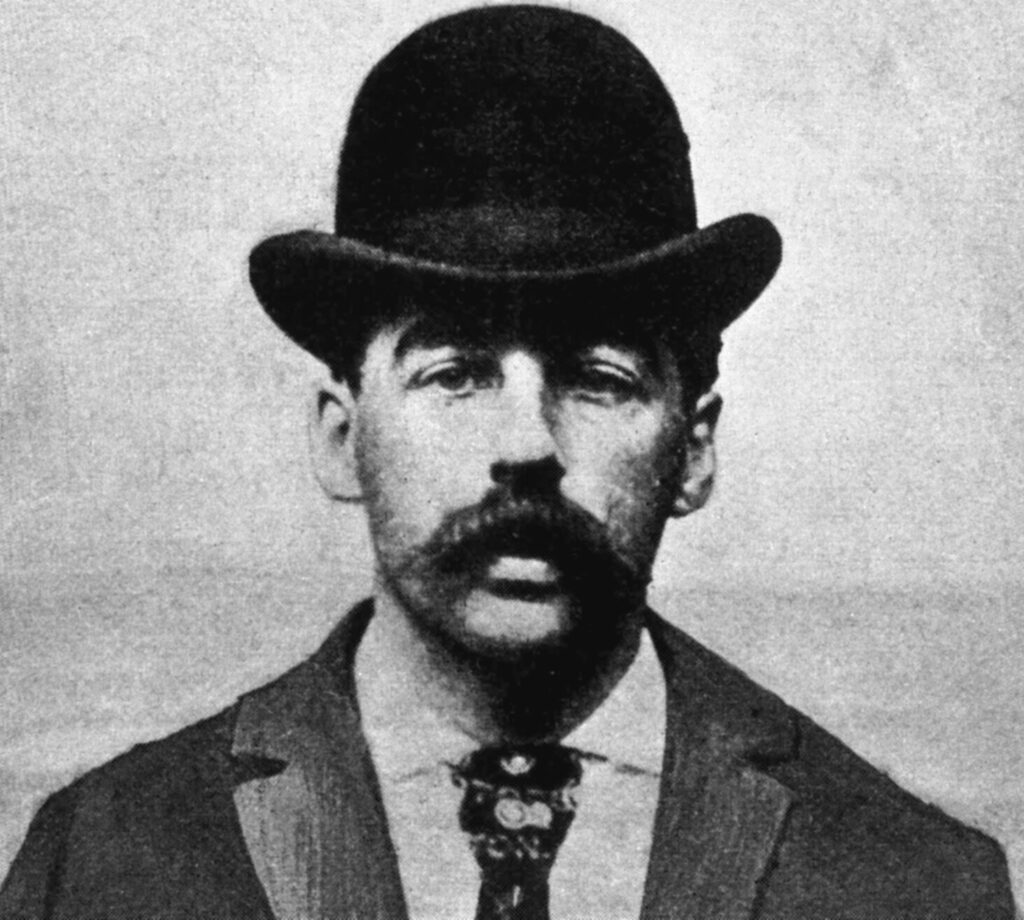
The Roots of a Killer
Born as Herman Webster Mudgett on 16th May 1861 in Gilmanton, New Hampshire, he belonged to a prosperous and respected family in the community.
Herman was a bright child excelling in school but exhibited signs of a disturbed personality, such as a fascination with death and a troubling penchant for cruelty towards animals.
At 17, he married Clara Lovering, a local farmer’s daughter, but soon abandoned her to enrol in the medical programme at the University of Michigan.
There, his unusual interest in anatomy, dissection, and stealing cadavers for insurance frauds disturbed other students.
During this period, he perfected his deception and manipulation skills, revealing a disregard for the lives of others and a disturbing pattern of morbid curiosity – early signs that foreshadowed the monstrous crimes he would later commit.
In an attempt to justify his atrocities, he claimed that older boys once forced him to touch a human skeleton, igniting his ghoulish interests.
From Herman Webster Mudgett to H. H. Holmes: The Making of a Monster
Changing his name – though not legally – was a strategic move to sever ties with his past fraudulent activities, project an air of respectability, and facilitate his criminal pursuits.
Although historians believe that assuming a different identity was to honour a former medical school professor, Holmes may have taken inspiration from the well-known fictional detective Sherlock Holmes.
Now, as Dr Henry Howard Holmes, he presented himself as a successful physician and businessman, gaining the confidence of unsuspecting victims who would later fall prey to his deadly schemes.
His charisma and manipulative nature, typical traits of a sociopath, allowed him to gain people’s trust, even going so far as to propose marriage and financial security to his young female employees.
The Murder Castle
With the money from his frauds, Holmes built the “World’s Fair Hotel” at 63rd and Wallace streets in Englewood, Chicago, to attract the influx of visitors and job seekers for the 1893 World’s Columbian Exposition (the Chicago World’s Fair).
However, the true purpose of this hotel was far darker: it was a theatre for Holmes’s sadistic pleasures.
Designed to trap and kill, the three-storey building, a macabre monument to depravity, featured a labyrinthine layout of secret panels, false walls concealing soundproofed rooms with gas lines and airtight vaults for asphyxiation, quicklime pits for dissolving bodies, a crematorium, and chutes from the upper floors to the basement to process and dissect corpses.
His horrifying theatre of death no longer stands; it was consumed by fire in August 1895, after Holmes’s arrest.
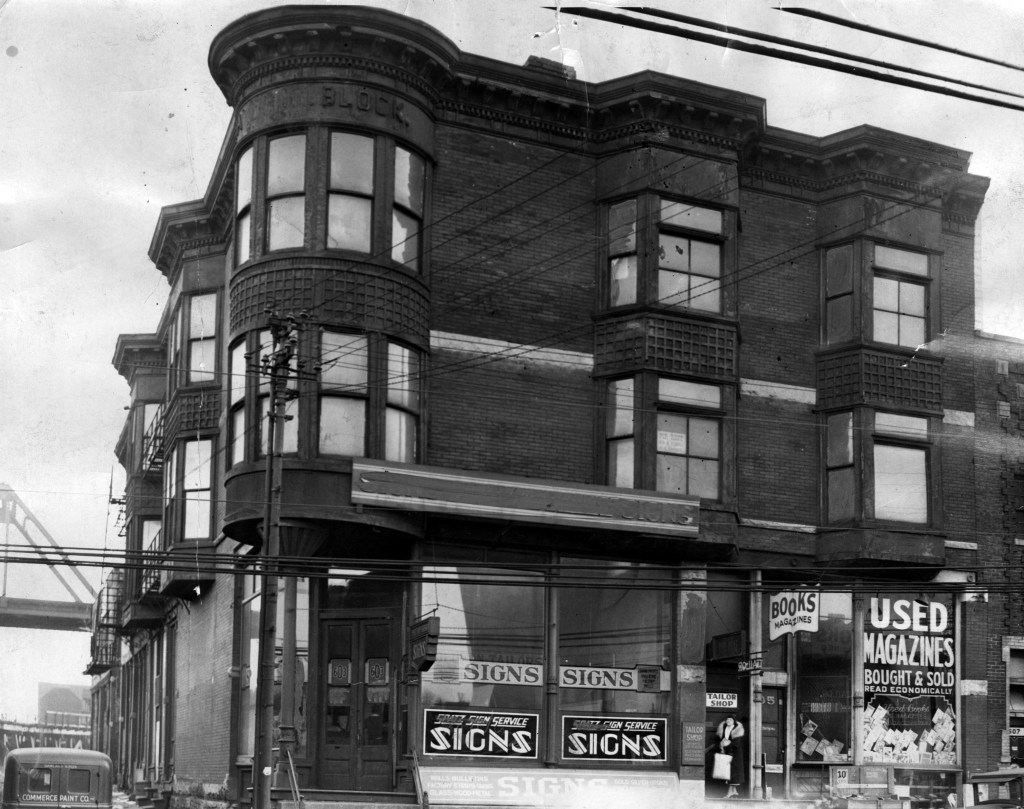
“It is growing on me. I mean a sort of paralysis of my nervous organisation, a general numbness which dulls my senses… I believe fully that I am growing to resemble the devil – that the similitude is almost completed.”
A Grim Catalogue of Victims and Deception
His crimes are shrouded in a mix of fact and sensationalism. While he confessed to killing 27 people, the figure is debated, as few of the ‘alleged victims’ were later found alive.
Victims of H. H. Holmes
| Benjamin Pitezel | Holmes’ former business partner, killed for insurance money. |
| Alice and Nellie Pitezel | Benjamin’s daughters, killed for insurance money. |
| Howard Pitezel | Benjamin’s young son, killed and his body burnt. |
| Emeline Cigrand | A former employee who vanished after Holmes proposed marriage. |
| Minnie and Anna Williams | Sisters who were swindled out of their inheritance and likely murdered. |
| Julia Conner | A hotel employee who disappeared with her daughter, Pearl. |
| Unknown Victims | Authorities found other bodies in the Murder Castle, but their identities remain unknown. |
Capture and Execution
Holmes’s downfall began with a fraudulent life insurance scheme, in which he faked the death of his associate, Benjamin Pitezel.
Suspicious, the insurance company hired the Pinkerton National Detective Agency under the direction of detective Frank Geyer.
While on the run, Holmes was leaving a trail of aliases, false identities, and unpaid debts, which the Pinkertons used to connect him to the Pitezel family and the dubious circumstances of their deaths.
On 17th November 1894, the police finally arrested the killer for horse theft in Texas, a crime easier to prove. After that, Holmes was extradited to Philadelphia to stand trial for the murder of Benjamin Pitezel.
This was a media sensation, with the public captivated by the gruesome details of Holmes’ crimes. While in custody, he admitted to taking the lives of 27 people, leading to his conviction and death sentence.
On a mild Thursday morning, 7th May 1896, at 10:12 am, H. H. Holmes was hanged, showing no remorse to the very end.
“I was born with the devil in me. I could not help the fact that I was a murderer; no more than the poet can help the inspiration to sing.”
Albert Fish: The Depraved Cannibal Who Preyed on America’s Innocence
One of the most depraved figures in criminal history, Albert Fish preyed on and cannibalised children at the dawn of the 1900s. His crimes, along with the disturbing letters he sent to victims’ families, left the public horrified and speechless.
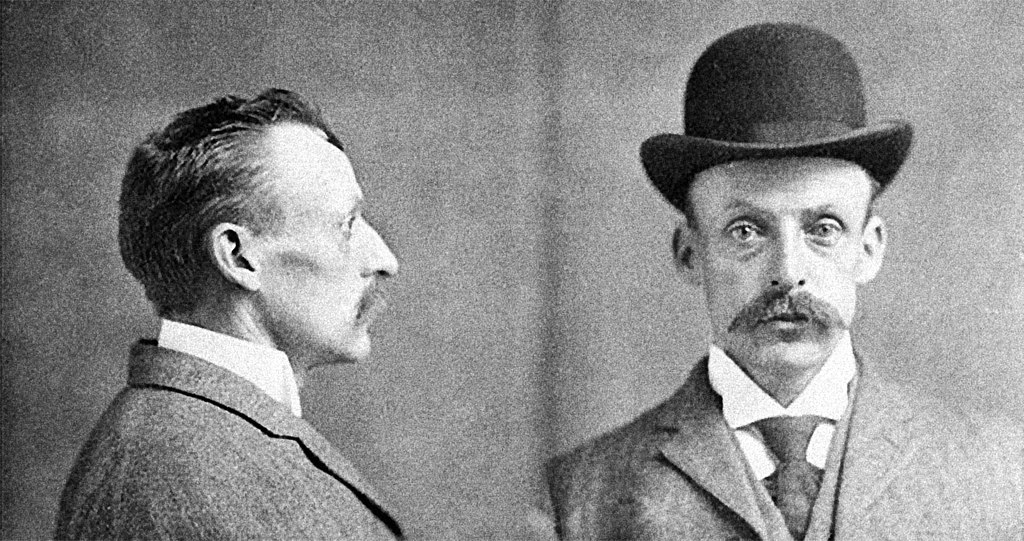
A Childhood Disfigured by Trauma
He was born as Hamilton Howard Fish on 19th May 1870, in Washington, DC, into a family plagued by mental illnesses and other disorders.
Orphaned at a young age by his father’s death, his mother placed him in an institution where he endured unspeakable physical and sexual abuse. That warped his sexuality and fuelled his fascination with pain and suffering.
As a child, he self-harmed and exhibited other disturbing behaviours, including coprophilia (an interest in faeces), urophilia (an interest in urine), and developed masochistic tendencies.
In his adolescence, Fish began frequenting public baths, where he witnessed and engaged in sadomasochistic acts, distorting even more his sexual desires.
“I always had a desire to inflict pain on others and to have others inflict pain on me. I always seemed to enjoy everything that hurts.”
A Life of Torture and Cannibalism
His crimes, teemed with horror and torment, remain some of the most disturbing in the annals of criminal history.
Fish lured young children with promises of candy, toys, or even odd jobs that appealed to struggling families.
Then he subjected them to horrific torture, including mutilation, sexual assault, and prolonged suffering.
His methods, described as “implements of hell,” involved knives, needles, and other tools to inflict maximum pain.
He also ate human flesh and wrote details of his techniques of preparation and consumption, which revealed a deeply disturbed and depraved mind.
To further worsen his heinous acts, he sent taunting and obscene letters to the victims’ families, filled with graphic descriptions of torture, murder, and cannibalism.
Names Forever Scarred by Evil
Though the exact number of victims lingers unanswered, Fish confessed to having subjected to unbelievable horrors to three children.
Victims of Albert Fish
| Francis McDonnell (1924) | 8-year-old boy strangled and mutilated in Staten Island. |
| Billy Gaffney (1927) | 4-year-old boy abducted, murdered, and cannibalised in Brooklyn. |
| Grace Budd (1928) | 10-year-old girl abducted, murdered, and cannibalised in New York City. |
Capture and Justice
Fish’s downfall came from his twisted compulsion to relive his crimes and taunt the victims’ families.
In 1934, six years after the abduction and murder of Grace Budd, her mother, Delian Flanagan, received an anonymous letter with chilling details of how her daughter had been kidnapped, killed, and cannibalised.
The police tracked the letter back to a rooming house in New York where Fish was staying. The landlady recognised the handwriting and provided the name to the authorities.
With relentless persistence and attention to detail, William King, a seasoned NYPD detective, ultimately broke Fish’s resistance and extracted his confession.
Fish initially denied any involvement in Grace’s disappearance, but King noticed a small cut on the criminal’s hand. With the help of other traces, evidence, and endless questioning, the sociopath eventually acknowledged his responsibility for the death of Grace Budd and revealed details of the murders of Billy Gaffney and Francis McDonnell.
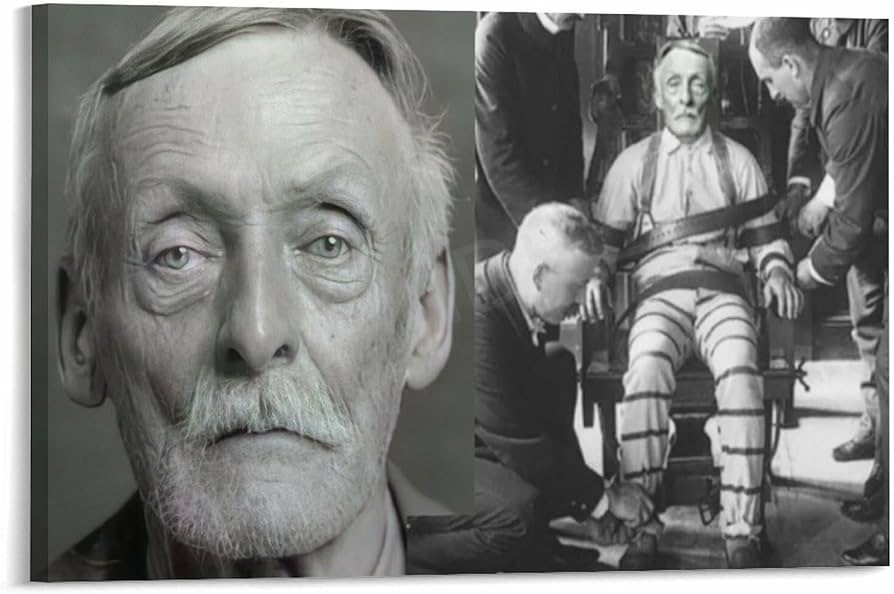
Albert Fish was sentenced to death on 26th March 1935 and was executed by electric chair at Sing Sing Prison in Ossining, New York, on 16th January 1936.
He reportedly entered the death chamber willingly and even helped the executioner position himself on the chair.
“What a thrill that will be if I have to die in the electric chair. It will be the supreme thrill. The only one I haven’t tried.”
Ed Gein: The Ghastly Killer Who Inspired Hollywood’s Horror Icons
Ed Gein’s horrific acts of grave robbing, murder, and obsession with human remains shocked the nation and inspired iconic horror films such as “Psycho,” “The Texas Chainsaw Massacre,” and the character Buffalo Bill in “The Silence of the Lambs.”
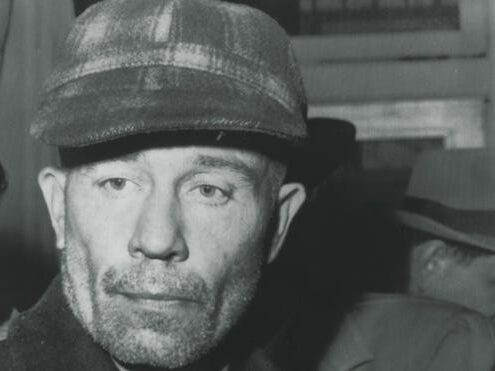
Shaped by Seclusion
Edward Theodore Gein (27th August 1906) was born in La Crosse, Wisconsin, to an alcoholic father and a verbally abusive, fanatically religious mother who instilled in him a deep fear of sin and the belief that women were inherently evil.
He spent his childhood on a solitary farm in Plainfield, Wisconsin, which hindered his opportunities for social interaction and exposed him to a constrained worldview.
Living in isolation with limited access to anything but pulp magazines filled with stories of cannibalism, torture, and war atrocities, Gein developed a morbid fascination with the macabre.
Henry, Ed’s brother, was aware of their mother’s negative impact and several times encouraged Ed to break free from her control.
In 1944, Henry died under mysterious circumstances during a brush fire on the family farm, sparking rumours of Ed’s participation.
Ed idolised his mother and was always seeking her approval for everything. When she passed away in 1945, the emotional wound left a void in his life – a void that may have become the breeding ground for his future atrocities.
Descent into Madness
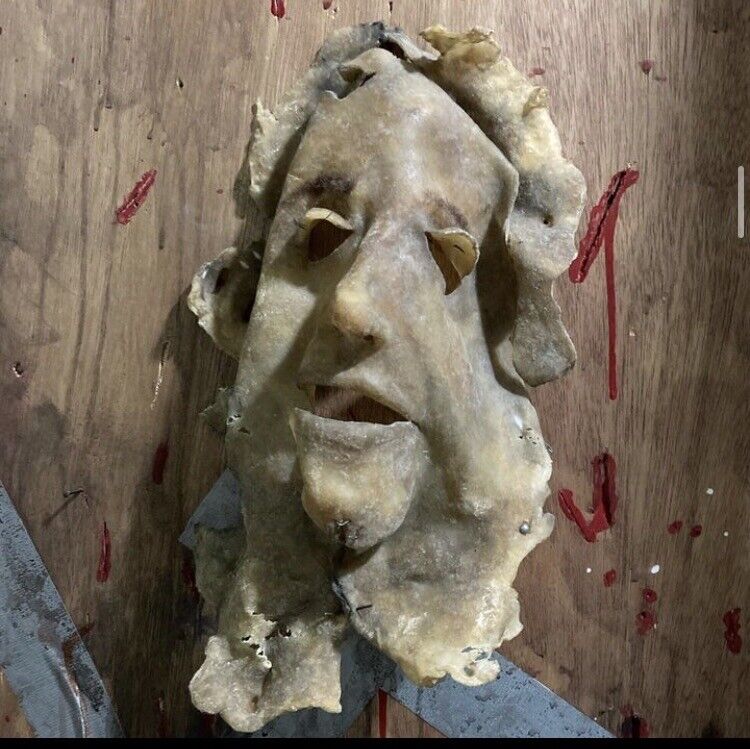
Unlike a typical serial killer, he was a disturbing blend of necrophile, fetichist, and deeply disturbed psycho.
His fascination with anatomy led him to the desecration of graves, focusing mostly on middle-aged women.
He used those corpses to create a grotesque collection of trophies and household items, including masks, lampshades, chair seats, and even a suit made from human skin that he reportedly wore in a twisted attempt to become his mother.
Although Gein denied cannibalism, there was evidence suggesting he may have consumed human parts, but he admitted to having engaged in necrophilia with the exhumed bodies.
The Grim Toll of His Obsession
The most accurate information shows that Ed Gein confessed to having killed two women.
Victims of Ed Gein
| Mary Hogan (51) | Shot with a .32 calibre pistol on 8th December 1954 in Pine Grove, Wisconsin. |
| Bernice Worden (58) | Shot with a .22 rifle in Plainfield on 16 November 1957. |
While his house held numerous human remains, he only acknowledged his involvement in a couple of murders and claimed that the other body parts were taken from local graveyards.
Capture, Trial, and Institutionalisation
When Bernice Worden disappeared, her son Frank, a deputy sheriff, immediately suspected Ed Gein due to a recent purchase he’d made at the store and his well-known obsession with anatomy.
Frank Worden and Sheriff Art Schley of Waushara County searched Gein’s farm, where they discovered Bernice’s decapitated body hanging upside down and gutted like a deer.
The horror Frank must have felt upon finding his mother in this condition is unimaginable.
That same evening, Ed Gein was arrested at a neighbour’s house.
Gein’s trial took place in 1958, and he pleaded not guilty by reason of insanity; he was declared mentally incompetent and was committed to the Central State Hospital for the Criminally Insane in Waupun, Wisconsin.
In 1968, Gein was deemed to understand the proceedings and was found guilty of first-degree murder in the death of Bernice Worden, but returned to the hospital and later transferred to the Mendota Mental Health Institute in Madison, Wisconsin.
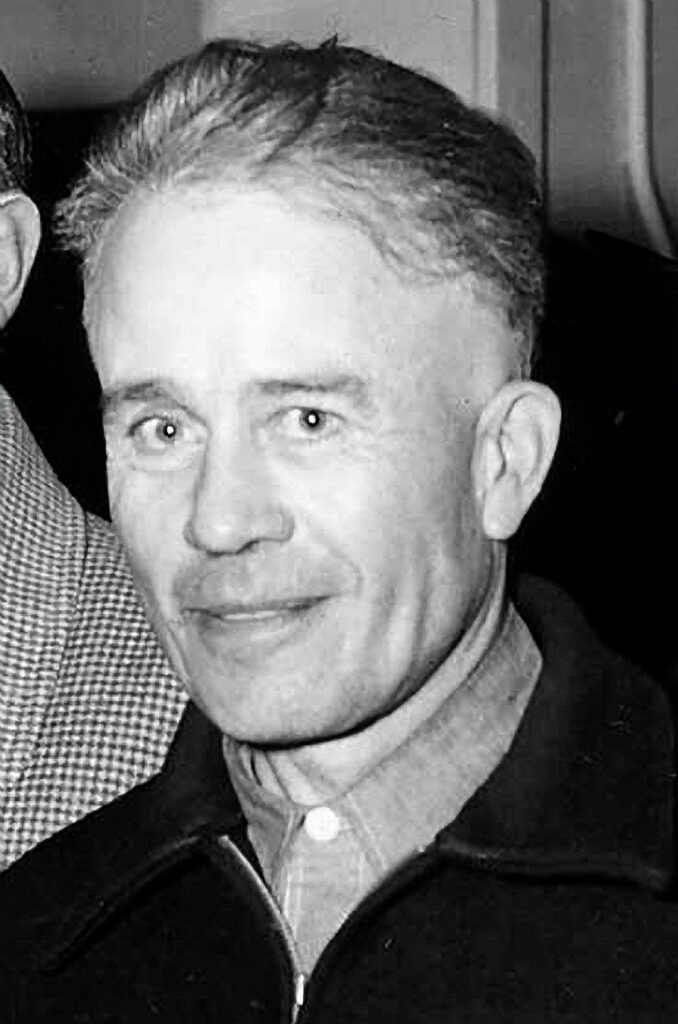
Ed Gein spent the rest of his life in psychiatric units, where he died on 26th July 1984 at the age of 77 from respiratory failure due to lung cancer.
Charles Manson: The Rise and Fall of a Cult Leader
Charles Manson possessed a sinister charm that he used to convince his followers to commit brutal murders during the late 1960s in the name of a fake apocalyptic race war.
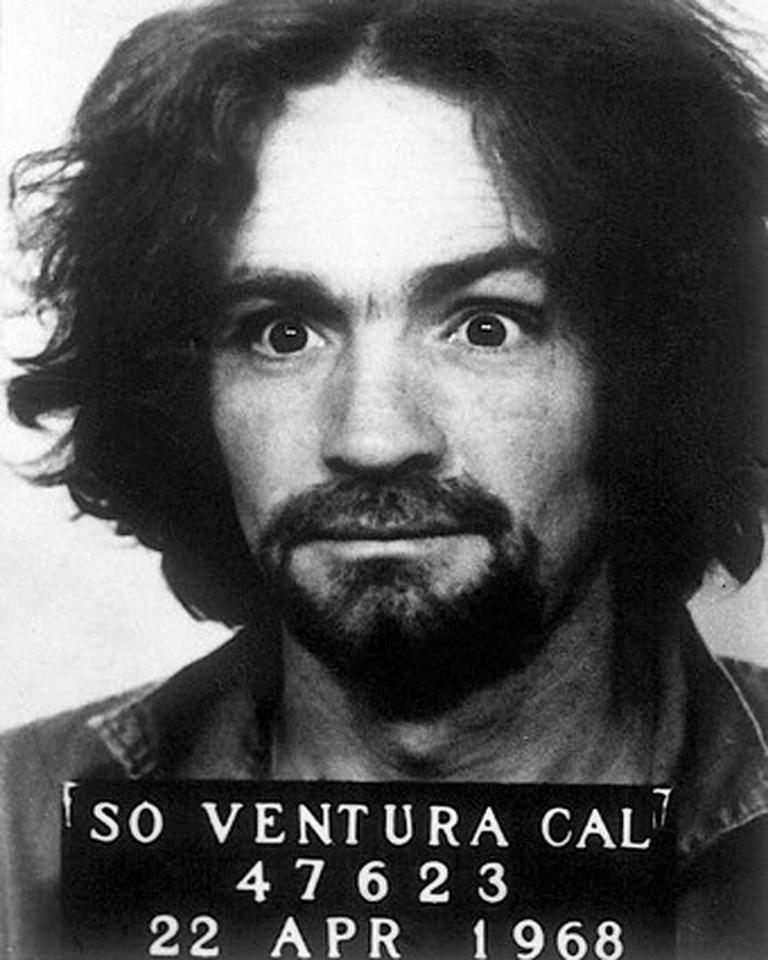
Early Years
Born Charles Milles Manson on 12th November, 1934, in Cincinnati, Ohio, his life was marked by instability from the outset. His 16-year-old mother, Kathleen Maddox, was abandoned by his father, Colonel Walker Henderson Scott Sr., after learning of her pregnancy.
Three months before Charles’ birth, Kathleen married William Eugene Manson, but their marriage ended in divorce shortly after the boy was born.
Charles’s early years were characterised by his mother’s struggle with alcoholism and her later imprisonment for armed robbery. This event led to a period of relative stability when he moved with his aunt and uncle in McMechen, West Virginia, where he attended school for a short term.
Upon his mother’s release, the cycle of instability resumed, with frequent moves from town to town, staying in hotels or with acquaintances.
This itinerant lifestyle and absence of guidance propelled him towards a life of petty crime. And by his teenage years, he found himself in and out of juvenile centres, where harsh conditions and abuse were commonplace.
Those cold and unwelcoming institutions, such as the National Training School for Boys in Washington, DC, became a breeding ground for his flourishing antisocial character.
The Formation of The Manson Family
In 1967, Manson had relocated to California.
His charismatic personality – a blend of magnetism, self-assuredness, and enigmatic defiance – attracted followers, primarily young women seeking purpose in life.
This group would become known as the Manson Family.
By 1968, the “family” had established a communal living arrangement at the dilapidated Spahn Ranch in Los Angeles County.
Their jovial lifestyle, characterised by laughter and music, masked a sinister undercurrent of indoctrination.
Manson’s ideology was a cocktail of apocalyptic beliefs, racial theories, and idiosyncratic interpretations of the Bible, science fiction, and fringe psychology.
He presented himself as a messianic figure, even claiming to be Jesus Christ, to manipulate and control his followers and create a climate of unquestioning loyalty.
Central was his belief in an impending apocalyptic “race war,” which he termed “Helter Skelter,” borrowed from The Beatles’ song. He convinced his dancing puppets that they were tasked with inciting this conflict through murder, paving the way for his emergence as a leader in the resulting chaos.
To stay in control, Manson kept his adherents isolated from the outside world and exploited their emotional vulnerabilities, providing a sense of belonging in a fictional superior group with a special mission. At the same time, the use of LSD and other heavy drugs further blurred the lines between reality and Manson’s fabricated narratives.
The Manson Family Murders
In August 1969, Manson’s delusional prophecy culminated in two nights of unthinkable violence. He orchestrated the murders of actress Sharon Tate and six others to incite the race war he’d predicted.
The Tate Murders (August 8th-9th, 1969)

| Sharon Tate | Actress married to director Roman Polanski |
| Jay Sebring | Celebrity hairstylist |
| Abigail Folger | Heiress to the Folger coffee fortune |
| Wojciech Frykowski | Aspiring screenwriter |
| Steven Parent | A visitor |
| Charles “Tex” Watson |
| Susan Atkins |
| Patricia Krenwinkel |
| Linda Kasabian |
Watson, Atkins, Krenwinkel, and Kasabian drove to 10050 Cielo Drive, Los Angeles, past midnight. Upon arrival, they encountered 18-year-old Steven Parent, who was visiting the estate’s caretaker.
Watson shot him when he was leaving the guest house.
Kasabian stayed as a lookout, while Watson, Atkins, and Krenwinkel stormed into the main house, where they found Tate – 8 ½ months pregnant – along with her three friends Jay Sebring, Abigail Folger, and Wojciech Frykowski.
They all were gathered in the living room with Tate and Sebring tied together by ropes around their necks. Sebring was shot and stabbed ad nauseam when he dared to complain about the rough treatment of Sharon Tate. Frykowski and Folger attempted to escape but were met with brutal force. Frykowski was hit by gunfire, struck over the head, and pierced again and again while Krenwinkel knifed Folger 28 times.
With tears down her face, Sharon Tate pleaded for the life of her unborn child. But empty-hearted, merciless Susan Atkins riddled Tate 16 times in several parts of her body, including her stomach. In a final macabre act, Atkins used Tate’s blood to scrawl the word “PIG” on the front door.
At dawn, Winifred Chapman, Tate’s housekeeper, arrived for work. Horrified by the bloody and gruesome scene, she fled to a neighbour’s house to seek help and call the police.
The LaBianca Murders (August 9th-10th, 1969)
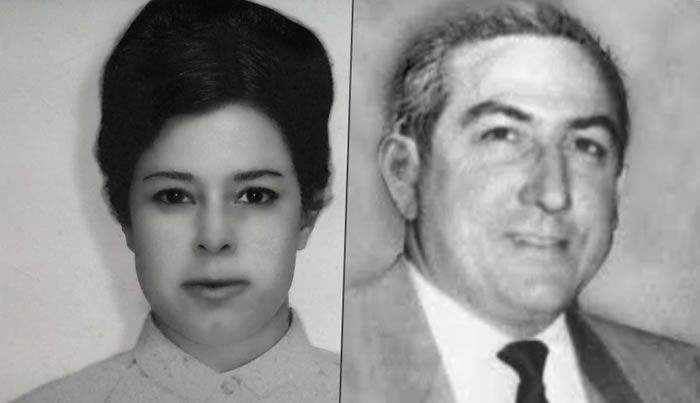
| Leno LaBianca | Supermarket executive |
| Rosemary LaBianca | His wife |
| Charles Manson |
| Charles “Tex” Watson |
| Patricia Krenwinkel |
| Leslie Van Houten |
| Susan Atkins |
| Steve “Clen” Grogan |
| Linda Kasabian |
After the horrific crimes committed the night before, the perverse family continued at 3301 Waverly Drive, Los Angeles, to the home of Leno and Rosemary LaBianca.
But this time with Charles Manson spearheading.
Manson entered the house first to tie up the couple.
Before leaving, he instructed Watson, Krenwinkel, and Van Houten to carry out the murders.
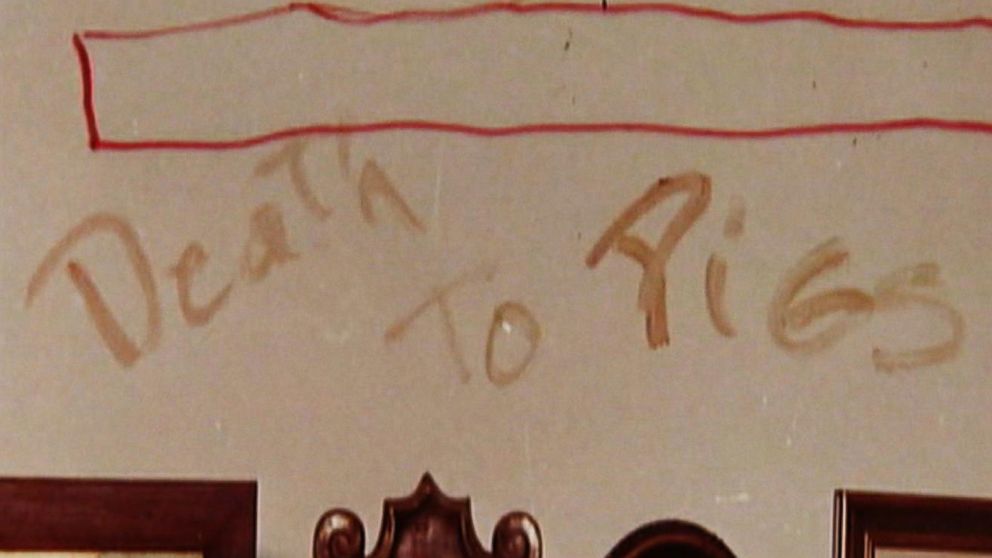
Watson tied Leno’s hands, covered his head with a pillowcase, and then pierced him many times with a bayonet until tiredness forced him to stop. Krenwinkel carved the word “WAR” into Leno’s abdomen and left a carving fork protruding from his stomach.
Van Houten and Krenwinkel took Rosemary LaBianca into the bedroom. Despite her efforts to fight back, both morbid women repeatedly stabbed her. Later, Van Houten ripped through Rosemary’s flesh post-mortem.
The murderers, aiming to intensify the horror of their actions, used the LaBianca’s blood to write the messages “Death to pigs” and “Rise” on the walls and refrigerator.
Arrest, Trial, and Legacy
The sheer brutality of the Tate-LaBianca bloodbath baffled law enforcement. A breakthrough came when Susan Atkins, jailed for an unrelated crime, boasted to her cellmates about the murders.
This information reached the authorities and led them to connect the Manson Family to the killings.
After gathering evidence and testimonies, on 1st December, 1969, Manson and several followers were arrested at Barker Ranch in Death Valley and were charged with the Tate-LaBianca murders.
Although Manson did not physically take part in the homicides, his manipulation and directive role led to his conviction. In 1971, Charles Manson was sentenced to death, later commuted to life imprisonment after California abolished the death penalty.
“Just because you’re convicted in a courtroom doesn’t mean you’re guilty of something. Did I kill anyone?”
Spending the rest of his life behind bars, Manson continued to horrify and attract attention until he died from respiratory failure and colon cancer on 19th November 2017, at the age of 83.
Fate of the Manson Family Members
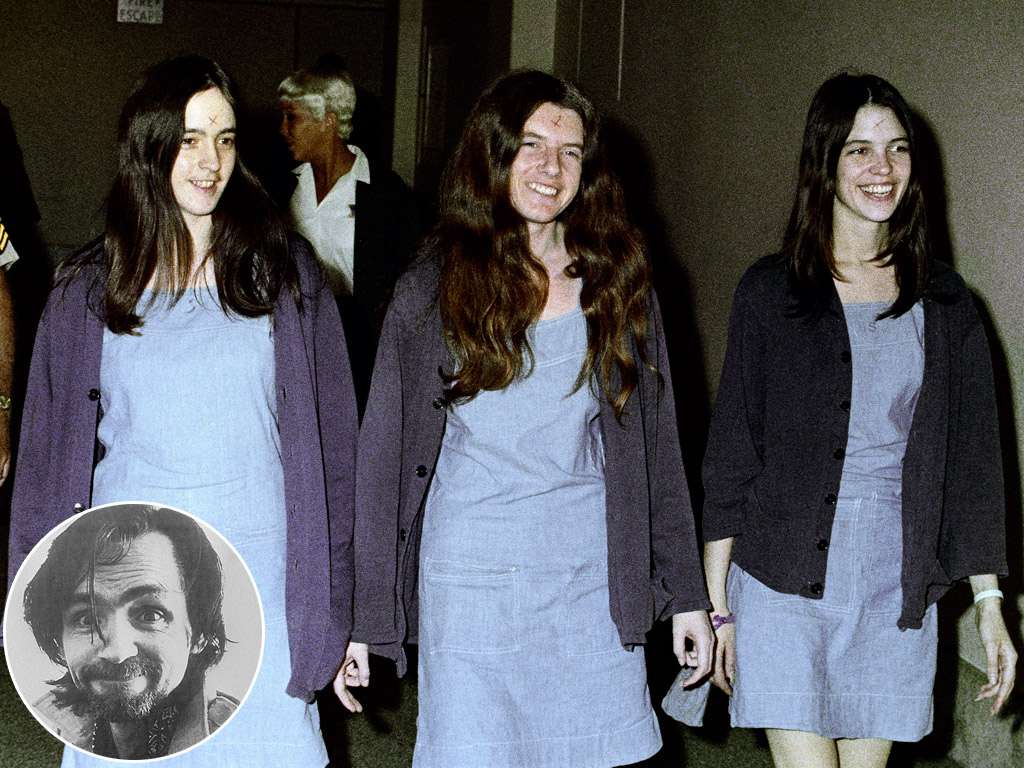
| Name | Age at Imprisonment | Status |
|---|---|---|
| Charles “Tex” Watson | 24 | Incarcerated |
| Susan Atkins | 22 | Deceased (died on 24th September 2009 at age 61) |
| Patricia Krenwinkel | 22 | Incarcerated |
| Leslie Van Houten | 19 | Released on 11th July 2023 at age 73 |
| Linda Kasabian | 20 | Deceased (died on 21st January 2023 at age 73) |
| Steve “Clem” Grogan | 20 | Released on 18th November 1985 at age 34 |
A Dark Mirror
This exploration of serial killers reveals the horrors that lurk in the shadows of society and the consequences of violence and abuse inside the family core.
By understanding these serial killers and how they reached their highest point of aggression, we gain insight not only into their twisted minds but also into the factors that can give rise to such terror.
A list of serial killers should likewise include world leaders who have caused the deaths of hundreds of thousands or even millions by starvation, control, or religion.
But that’s a topic for another day. Stay tuned for Part II of this post.



1 thought on “The Shocking Stories of America’s Serial Killers: Dark Lives Part 1”